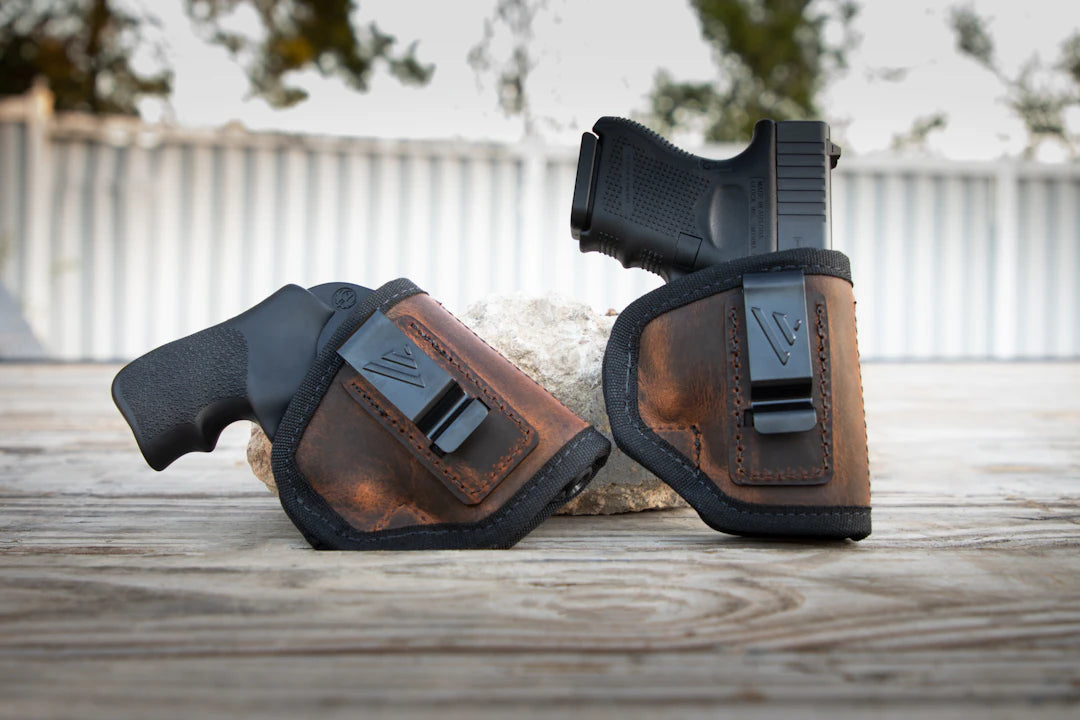Frequently Asked Questions
1. How does clothing impact holster selection for concealed carry?
2. What are the different types of holsters mentioned in the article?
3. How do clothing fit and fabric choices affect holster selection?
4. What considerations should I keep in mind for summer and winter clothing when carrying a concealed firearm?
5. Why is personal comfort and legality important when choosing a holster?
When it comes to concealed carry, one of the critical considerations is how clothing impacts holster selection. Whether you’re a novice or a seasoned firearm enthusiast, understanding this relationship is essential for both comfort and safety. The right holster allows for discreet carry, adequate accessibility, and optimal retention. This article will explore how different types of clothing influence holster choice, focusing on factors like fit, fabric, and style while ensuring you find the best solution for your individual needs.
Understanding Holster Types
Choosing the right holster can be just as essential as selecting the right firearm. The market is flooded with various types of holsters designed for different carry styles, including:
- Inside the Waistband (IWB): Offers maximum concealment but may require looser clothing.
- Outside the Waistband (OWB): Easier access but generally less discreet.
- Appendix Carry: A modern trend that requires specific clothing considerations.
- Shoulder Holsters: Ideal for jackets or loose-fitting clothing.
Understanding these types can help you assess how your daily attire influences your holster selection and functionality.
The Influence of Clothing Fit
The fit of your clothing significantly impacts your holster choice. Let’s dive deeper into how this factor plays a role.
Baggy Clothes vs. Fitted Attire
Baggy clothing can offer greater concealability, especially when opting for larger holsters or tactical handcuff holders. However, if your outfit lacks structure, it might also lead to awkward printing—a situation where the outline of your firearm becomes visible through your clothing. On the other hand, fitted clothing tends to make printing more apparent, limiting your options for holsters and firearms that you can comfortably carry.
Fabric Choices Matter
The materials used in clothing can also affect holster selection. For example:
- Lightweight Fabrics: Fabrics like cotton or linen may drape nicely but tend to cling to your body, making the gun more noticeable.
- Thicker Materials: Fabrics such as denim provide more structure and give added concealment for OWB holsters.
- Elasticity: Stretchy clothing can accommodate the contours of a holster better, allowing for both comfort and concealment.
Overall, the fabric you choose will impact how effectively your holster stays in place, how comfortable it feels, and how well it conceals your firearm.
Weather Considerations
Seasonal changes will oftentimes dictate not only your wardrobe but also your choice of holster. Understanding how different weather conditions affect both your comfort and clothing options is crucial.
Summer Clothing Choices
During warmer months, people tend to wear lighter and looser-fitting clothing. This could pose challenges, especially for IWB holsters. To combat excessive heat, look for breathable fabrics and consider styles that allow for concealed carry. Popular summer options include:
- Lightweight tank tops paired with belly bands or IWB holsters.
- Linen button-ups that can be worn untucked with OWB holsters for added airflow and comfort.
Winter Attire
During colder months, heavier clothing typically adds layers for warmth. This can provide excellent opportunities to carry larger holsters, as winter jackets or coats can conceal firearms quite effectively. However, one must consider:
- Ease of accessibility when wearing multiple layers.
- Understanding that certain outerwear may not accommodate tactical handcuff holders or other accessories without compromising hidden carry.
Situational Awareness: Lifestyle & Clothing
Your daily activities can influence your clothing patterns, and thus your holster selection. Having situational awareness allows you to modify your attire based on your environment and activities.
Active Lifestyle
If you lead an active lifestyle, clothing intended for exercise can be a challenge when it comes to concealed carry. Tight-fitting leggings may not accommodate traditional holsters effectively. You may want to consider:
- Holsters designed specifically for active wear.
- Clothing with built-in holsters or pockets for firearms and tactical accessories.
Professional Settings
Office or formal environments require careful clothing selection to ensure you maintain a professional appearance without sacrificing security. Here are a few strategies for success:
- Opt for tailored clothing that allows for a smooth fit while recognizing how your holster will accommodate shirt tuck or blazer styles.
- Choose fabrics with some degree of structure that can conceal the lines of your holster.
Fashion Trends and Holster Adaptation
Fashion is constantly evolving, and trends can impact clothing styles for concealed carry. It is essential to stay aware of these changes.
Popular Trends
Some current clothing trends can make it easier or harder to conceal a holster effectively:
- Oversized tops can provide more coverage for tactical holsters.
- High-waisted pants can facilitate IWB holsters for better concealment while optimizing comfort.
- Layered outfits can accommodate various holsters while offering accessible coverage.
Adapting to Change
As styles shift, so should your approach to holster selection. Be adaptable. Familiarize yourself with your current wardrobe and understand which holsters align well with your favorite looks. Aim for a balance of functionality without compromising your personal style.
Personal Comfort and Legality
While focusing on clothing and its effect on holster selection, don’t forget the importance of comfort and legal implications when carrying a firearm. Your comfort directly influences how often you will actually carry, and the wrong choice can lead to either discomfort or dangerous situations.
Assessing Fit and Retention
Regardless of your clothing choices, ensure your holster provides a secure fit. A holster that moves too easily may not hold your firearm securely in place, regardless of what you wear. With every outfit you consider, ask:
- Will my firearm remain securely in place during all activities?
- How quickly can I access it if needed?
Know Your State Regulations
Always understand the laws in your area concerning concealed carry. Your clothing might allow for more concealment, but legal formats dictate what is acceptable and emphasize necessary measures to carry safely.
Finding Your Ideal Combination
The path to the perfect combination of clothing and holster selection involves careful thought, awareness of personal style, and a thorough understanding of your needs. Implementing these basic strategies will lead to a more enjoyable concealed carry experience. Remember:
- Experiment with different clothing styles to determine what works best for your lifestyle.
- Make use of various holsters throughout the seasons and adapt to change as necessary.
Through understanding the nuances of clothing and how it affects holster selection, you're potentially paving the way for a more efficient and enjoyable concealed carry journey. Whether you’re donning tactical gear or your favorite casual wear, aim for a successful balance between practicality and style!
Your wardrobe doesn’t have to be a barrier to effective concealment; with the right knowledge, it can be a tool for enhanced safety and comfort. Further, it can help you make informed decisions that not only fulfill your requirements but also promote your personal style while ensuring the best functionalities for your holsters.
Embrace the adventure of fine-tuning your carry methods and remember that the right clothing can turn holster selection from a puzzle into a straightforward decision. So go ahead—equip yourself with the knowledge you need, assess your wardrobe choices, and carry with confidence!

